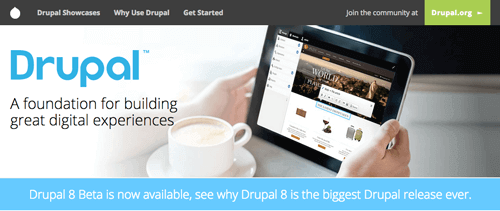Tooltester is supported by readers like yourself. We may earn an affiliate commission when you purchase through our links, which enables us to offer our research for free.
Remember 1992? The year Wayne’s World came out, the Olympic games took place in Barcelona (our home town!) and Microsoft managed to release a Windows version that didn’t flop (3.1). But yet another game-changing thing happened that was almost unnoticed—the Internet. Prior to that point in time the Internet was strictly scientific, but in 1992 it was opened up for commercial use.
Today on average, 50% of your competitors have a website. It doesn’t matter if you sell hand-knitted bobble hats or you offer your professional expertise online: not having a web presence will most likely endanger the future success of your business!
If you are keen to overtake half of your competitors by creating a website, we have just the right infographic for you!

Are you a newbie to the website building world? Or perhaps you are more fluent in HTML than in English? No worries, there are solutions that will adapt to your needs:
Super Easy solutions
Absolutely no technical skills required. You will be able to create a personal portfolio, an informative website for your business and even an online shop to sell your merchandise. You won’t need to write a single line of code to use these tools. In fact, if you are able to manage your emails and a text processor like MS Word, you will also be able to create your own website.

The super easy tools can be really cheap. For less than a $5 per month you can build your own website with a reliable provider and your own domain name.
Moderately Easy solutions
You don’t need to be a programmer to use the tools featured here, but HTML, CSS and FTP shouldn’t sound completely foreign to you. WordPress is an example of these moderately easy to use content management systems (CMS). Other tools such as Joomla and PrestaShop also fall under this category.
These tools are all open source and free to download. However, you will need to pay for the domain name and the web space. Moreover, if you need additional resources such as a new design (template) or premium plugins the price will increase.
Complex solutions
Some projects require a lot of flexibility and intensive use of advanced web technologies. This is the case when you will need to develop a truly customized solution that fits your project’s needs. For this you will need, at least, basic knowledge of HTML, CSS and PHP. The most common solution for complex projects is Drupal, an open source CMS.

Drupal itself is quite budget friendly (as a matter of fact it’s free). However, you will need to pay for hosting services and a domain name. Bear in mind that your costs will be much higher if you need professional help to develop your site.
Feel free to share our infographic on your own website if you found it useful and let us know.
We hope our article and the infographic helped you finding the right tool for your project. If you can’t decide on a tool, we are happy to help you—just leave a comment!
THE BEHIND THE SCENES OF THIS BLOG
This article has been written and researched following a precise methodology.
Our methodology

